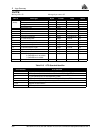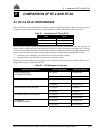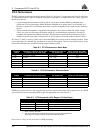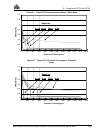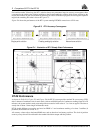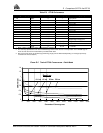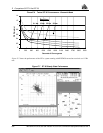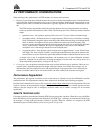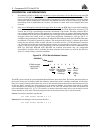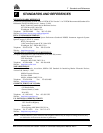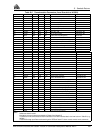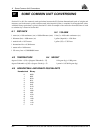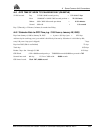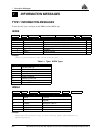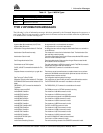
E Comparison Of RT-2 And RT-20
238 MiLLennium GPSCard SW Version 4.503/4.52 Command Descriptions Manual Rev 2
DIFFERENTIAL LINK BREAKDOWN
1. Provided the system is in steady state, and the loss of observation data is for less than 30 seconds, the RTK
positions will degrade according to the divergence of the reference observation extrapolation filters. This
causes a decrease in accuracy of about an order of magnitude per 10 seconds without a reference station
observation, and this degradation is reflected in the standard deviations of the low latency logs. Once the
data link has been re-established, the accuracy will return to normal after several samples have been
received.
2. If the loss of differential corrections lasts longer than 30 seconds
, the RTK filter is reset and all ambiguity
and reference model information is lost. The timeout threshold for RTK differential corrections is 30
seconds, but for Type 1 pseudorange corrections, the timeout is 60 seconds. Therefore, when the RT-
20
can no longer function because of this timeout, the pseudorange filter can produce differential positions
for an additional 30 seconds (provided RTCM Type 1 messages were transmitted along with the Type 59
messages) before the system reverts to single point positioning. Furthermore, once the link is re-
established, the pseudorange filter produces an immediate differential position while the RTK filter takes
an additional 14 seconds to generate its positions. The reference models require 7 reference observations
before they are declared usable, and this will take 14 seconds, based on a 1/2 Hz differential correction
rate. The reference model must be healthy before solutions are logged to the low latency logs, so there is
a delay in the use of real time carrier positioning to the user once the link has been re-established. The
RTK logs (RTCA/B, RTKA/B AND BSLA/B) use matched observations only (no extrapolated
observations), and these will be available after three reference observations are received, but will have
about 1.5 seconds latency associated with them.
Figure E-8 RT-20 Re-initialization Process
The RTK system is based on a time-matched double difference observation filter. This means that observations at
the remote site have to be buffered while the reference station observation is encoded, transmitted, and decoded.
Only two seconds of remote observations are saved, so the reference station observation transmission process has
to take less than 2 seconds if any time matches are to be made. In addition, only remote observations on whole
second boundaries are retained (e.g. measurements made at 3.0, 4.0 or 5.0 seconds of the week are retained, but
not measurements made at 3.5, 4.1 or 5.25 seconds), so monitor observations must also be sent on whole seconds
if time matches are to be made. The following shows the correct and incorrect way to send corrections:
Correct. Corrections should be sent like this:
LOG COM2 RTCM59 ONTIME 2.0 0.0
Incorrect. Do not attempt to send corrections like this:
LOG COM2 RTCM59 ONTIME 2.0 0.5
REFERENCE
REMOTE
1234567
Reference
Doppler
Start generating
RTKA/B logs
Models
Ready
Generate
RTKA/B
logs
RTCM59 messages
required following
RESETRT20
reference phase
models and
and
PRTKA/B



